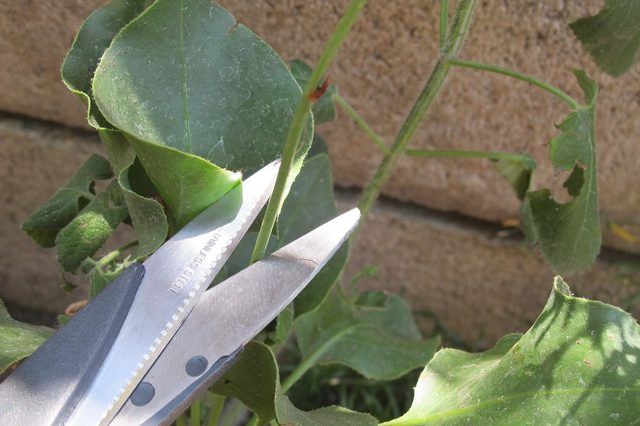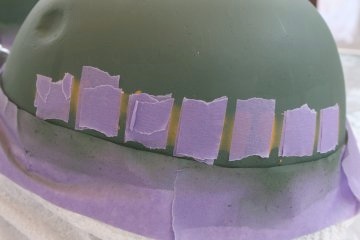Today’s topic is Do Geraniums Come Back The Following Year. Obviously, you can find a great deal of Do Ivy Geraniums Come Back Every Year-related content online. The proliferation of online platforms has streamlined our access to information.
There is a connection between the Annual Geranium and Do Geraniums Need Full Sun information. more searching has to be done for How To Keep Geraniums For Next Year, which will also be related to How To Keep Geraniums For Next Year.

41 Things You Should Know About Do Geraniums Come Back The Following Year | do geraniums come back yearly
- With their wide range of color, shape, and size of blooms, it’s hard not to find a reason to use geraniums everywhere. The most common of the annual variety, zonal geraniums, is the most recognizable geranium; it gets its name from the broad band of darker coloring on its leaves. In some, this “zone” is more pronounced than in others. If you don’t see this banding on the leaves but the flowers look like a zonal geranium, it could be a variety for which this coloring is not present or a seed geranium (the latter of which is a more inexpensive version of its zonal counterpart). - Source: Internet
- Both annual and perennial geraniums are tough container plants that do not require frequent watering and fertilizing. In general, water geranium containers more frequently in the summer when the top inch of soil feels dry. Annual perennials are not hardy in most climates and will need to be protected from frost. You can bring your pelargoniums indoors to overwinter or simply grow them as houseplants. - Source: Internet
- This is the way I store my geraniums because I’m able to keep them in my heated greenhouse all snug and safe for the winter. I’ve had very good luck with this method for 3 years now. I know I always tell you this, but it’s worth noting that I am not a master gardener. I just try new things and share the ones that work for me. And this is one of them. - Source: Internet
- Cut the best-looking geraniums cuttings into 4in sections, discarding any that don’t have plenty of shoots or nodes. With each section, strip almost all the leaves from the stem, leaving only the top pair. Also pinch out any tips that look like they might develop into flowering shoots. - Source: Internet
- You might want to save yours because you’re worried you won’t find a particularly beautiful cultivar again next year. It could also be fun to try and take cuttings to start new geraniums and save on expenses. Geraniums are so hardy that some families have been passing them down as family keepsakes for decades. - Source: Internet
- Geraniums grown in containers will need to be watered more often than those in the ground because the soil in pots dries out faster. On hot summer days, you may need to water your containers every 2 - 3 days, depending on how much sun and rain the containers get. Geraniums love rainwater, which can be stored in barrels to water your containers during a drought period. Water the plants deeply to saturate the roots. Let the soil dry out a bit between watering sessions, as geraniums can develop root rot in soggy soil. - Source: Internet
- A great option for overwintering your geraniums is to bring them into your house. They’ll need a sunny location, with temperatures at 55-65 degrees F. They should be dug up out of the ground and transplanted into containers about 6 weeks before the first frost of the season. Trim back any excessively long roots. - Source: Internet
- Prune your geraniums in the late fall or just before you bring them indoors. Remove all the dead, brown leaves and blooms. If the geranium stem still feels firm, it’s healthy. - Source: Internet
- When growing geraniums in containers choose a peat-free multi-purpose compost with added slow-release fertiliser. Geraniums look spectacular when planted with other summer bedding plants. If planted in a good compost and kept well-watered they’ll withstand being planted tightly with other tender plants. - Source: Internet
- Geraniums are one of the most popular container and garden plants. You just can’t beat their bright colors and sturdy, well-shaped foliage. At the garden center, geraniums tend to come in larger sizes, which make them more expensive than other summer annuals. - Source: Internet
- Pelargoniums (often called âtender geraniumsâ) are bright, cheerful summer-flowering plants. If you are looking for a show-stopping bedding plant, a drought-tolerant hanging basket plant or something new for the windowsill or conservatory, pelargoniums make a great choice. Thereâs plenty to choose from so here are some pointers on which to grow. - Source: Internet
- The perennial geranium is often considered a true, or hardy, plant and is very different from an annual. They grow back every season for several years making them low maintenance once planted. Perennials thrive in sun or partial shade, come in a variety of colours and can grow up to 60 cm tall. - Source: Internet
- Geraniums are easy-care abundant bloomers whose bright flowers will blossom from spring until fall. Geranium plants are grown as annuals in most zones, but are considered evergreen perennials in zones 10 and 11. Although commonly called geranium, this well-known potted plant, native to South Africa, is actually a Pelargonium. (See more below on the differences between geraniums and pelargoniums.) - Source: Internet
- About 6-8 weeks before the last expected frost, relocate your dormant geraniums to indirect light. Clean up the plants by cutting off any dead leaves, and cut stems back to healthy green growth. Give the potted plants a thorough watering and a diluted dose of fertilizer. - Source: Internet
- Use high-quality potting soil for planting geraniums in containers. Never add rocks to the bottom of containers, which actually reduces drainage. You can top-dress containers with compost to retain moisture and deliver nutrients over time to the soil. Perennial geraniums are more tolerant of poor soil than pelargoniums. - Source: Internet
- Perennial geraniums, also known as hardy cranesbill, also grow well in containers and will come back year after year. They require little maintenance beyond dividing and repotting overgrown plants every few years. Hardy cranesbill makes an excellent filler in an unlimited number of great plant combinations. - Source: Internet
- Annual geraniums, more accurately known as pelargoniums, make exceptional container plants, serving as the thriller or filler. Their long-lasting blooms can brighten any patio, balcony or entryway. They are stunning when planted in several matching containers, where the colorful swath of flowers can make a big impact. The trailing ivy-leaved pelargoniums are particularly well-suited for growing in hanging baskets. Pelargoniums are not frost hardy, so plants can be tossed in the winter or brought indoors to overwinter. - Source: Internet
- All plants have a species or Latin name, as well as a common name. ‘Geranium’ is the common name for the species Pelargonium. Confusingly, ‘Geranium’ is also the botanical name of hardy geraniums, also known as cranesbills or ’true geraniums’. Despite sharing a common name, geraniums (pelargoniums) and cranesbills (geraniums) are different species, and have different growing requirements. - Source: Internet
- The best time to plant annual geraniums in pots is in the spring, when plants send out new growth. The cooler temperatures of spring also help new plants settle in before the heat of summer. Containers of pelargoniums should be placed in a sunny location, with at least 4 hours of direct sun for best blooming potential. Choose a container that is at least 12 inches in diameter, with holes for drainage. Pelargoniums do not appreciate soggy, waterlogged soil, so choose containers that drain well and can be elevated with pot feet. - Source: Internet
- In about six to eight weeks, the cuttings should start to form roots. Once they are at least one inch long, transplant the cuttings into three to four inch containers filled with standard potting soil and set them in direct sun. When they have grown to be the size of the geraniums you would buy at the store and all threat of frost has passed, it is safe to plant them outdoors. - Source: Internet
- Spring has officially sprung! Begin planning your garden now so you’re ready for when the frost is gone for good. If you’ve never thought of planting geraniums, consider adding them to your garden this year, as they’re beautiful with low maintenance. The classic geranium loves hot weather, holds up well in dry conditions and brightens the garden with a variety of colours. No wonder it’s been a favourite in gardens for years! With this guide, we can help you from the beginning of your planting season through to the winter. - Source: Internet
- For perennial geraniums, cut them down to a few inches above the ground in the fall, as they start to die back. Most are hardy in zones 3-9 and require no extra protection in the winter. Choose frost-proof containers that will not crack in cold temperatures. Do not let containers become waterlogged in winter, which can kill even the toughest plants and cause pots to crack. - Source: Internet
- As well as offering beautiful blooms, some geraniums, known as scented-leaf geraniums, have fragrant leaves. Choose from apple, orange, lemon, spice or lavender. They’re often sold as herbs as the leaves are edible. - Source: Internet
- Regal types are probably some of the pickiest geraniums. They prefer a cooler growing season and will stop blooming in high summer heat. Make sure they have well-drained soil, and keep them cool when the steamy temps arrive. - Source: Internet
- Before we start, let’s define what kind of geranium we are discussing. Flowers that are commonly called “geraniums” bear a botanical name of Pelargonium. You might also hear them called zonal, scented, ivy leaf or Martha Washington geraniums. - Source: Internet
- Insert the geraniums cuttings to about a quarter their depth into a gritty mix of compost. I love using these square bulb trays for cuttings. They look good in them – as they sit and root – and you can fit lots in, spaced well and evenly apart. Put them on a heated base if you have one, or store them somewhere bright, but cool and keep their compost moist at all times. - Source: Internet
- Geraniums have nice thick roots and stems that allow them to survive winter dormancy if kept above freezing. You can also allow geraniums to go dormant and store them as bare roots. Follow these steps: - Source: Internet
- Pelargonium ‘Calliope Dark Red’ is a hybrid between ivy-leaved and zonal geraniums. It bears rich, dark red flowers and has a mounding/trailing habit. It grows 12 inches tall. - Source: Internet
- I have a trailing geranium in a hanging basket that has large, beautiful flowers. I want to save this through the winter if possible. What shall I do to carry it through the winter? If it dies, then I will just buy a new one next year like I always do, but this is so pretty I would like to keep it. - Source: Internet
- It’s important to harden off the geraniums before transplanting them outdoors, which is the process of exposing transplants or seedlings gradually to the environmental changes that occur once outside. Plant the geraniums outside again, only after all danger of frost has passed. May is usually when I transplant them in my PNW garden. I use a time-release fertilizer at that time. - Source: Internet
- If you enjoy a bright burst of colour all summer, then an annual geranium is for you. Annuals are considerably less expensive than perennials and don’t limit you to the same flowers every year. These plants require several hours of sun but are generally resistant to drought and grow in varying colours and heights. - Source: Internet
- Geraniums are also very easy to propagate. You might find that after two or three years they are beginning to crowd out their neighbours. Spring is the time to take a fork to the outside and remove a few new clumps around the edge that are rooting out of bounds. - Source: Internet
- For step-by-step instructions, see my blog post on How to Start Geranium Cuttings. The longer you keep your geraniums, the woodier the stems get and the less they will flower. It’s a great idea to start new cuttings from existing plants for this reason alone. - Source: Internet
- If you have limited indoor space, or you want to multiply the number of plants for next year, you should think about taking cuttings from a geranium plant as an option. They are easy to root as cuttings. The baby plants take up less space than bringing the mother plant indoors, and they’ll probably have more blooms next season. - Source: Internet
- After five years or so you might notice the centre is looking a little woody and less floriferous. Time now to dig out the whole clump and divide it up using the back-to-back fork technique. Discard any old woody sections from the middle and replant the fresh new clumps for better flowering next year. You might even have some spare sections to hand on to friends. - Source: Internet
- Step 4: About six weeks before your last frost date, revive your geraniums by cleaning them up, cutting the stems back to healthy green growth and planting them back into fresh potting soil. Bury the stems two nodes deep, where the new roots will form. Keep the plants slightly dry until you see new growth appear in one to two weeks, then keep the soil moist until the plants are large enough to plant back outside. - Source: Internet
- If planting in a container , there will be restriction in root growth. We recommend a well-enriched soil. Containers can dry out quicker, so we encourage you to keep an eye on the soil and water your geraniums when the surface soil is dry. - Source: Internet
- There are three ways to overwinter geraniums indoors: as a houseplant, a dormant bare root or cuttings. Which one you choose depends partly on how much space you have indoors, and also what temperatures you can accommodate. Here’s a closer look at each technique. - Source: Internet
- Perennial geraniums have similar container requirements, although they are less fussy than their annual counterparts. Perennial geraniums can tolerate more shade and moisture than pelargoniums; however, they bloom better in full sun. They form a dense carpet, so choose pots at least 16 inches in diameter with drainage holes. - Source: Internet
- Zonal geraniums are susceptible to pelargonium rust. This is a fungal disease that is often worse in wet summers or when plants have been grown in a poorly ventilated space. Rust is easily spotted as the underside of leaves displays brown spots. Destroy plants that are covered in the brown spots. - Source: Internet
- Grow geraniums in moist but well-drained soil in full sun. Cut back in late summer and take cuttings to insure against winter losses. Most geraniums need protection in winter – move pots indoors in autumn to ensure they grow back the following year. - Source: Internet
It’s crucial to be aware of the many electronic media sources available when researching How Long Do Geraniums Last In Pots, such as Google and YouTube. You may also get info about do geraniums come back each year on social media sites like Facebook and Twitter.
Video | Do Geraniums Come Back The Following Year
It’s crucial to read to examine the authenticity of each source in order to acquire the greatest information regarding How to grow pelargoniums. You’ll learn more about How Long Do Potted Geraniums Last after watching the films included in this post, which come from a variety of different sources. Information on a wide range of topics may be easily accessed via the internet.
## Notable features of Do Zonal Geraniums Come Back Every Year include:- Do Geraniums Come Back The Following Year
- Do Geraniums Come Back The Next Year
- Do Geraniums Come Back Yearly
- Will Geraniums Come Again Next Year
- Do Geraniums Come Back Every Year Uk

Because there are so many websites and forums that provide information about 4 Easy Options for Overwintering Your Geraniums, it should not be difficult for you to locate the data that you want.
The majority of individuals are accustomed to taking a completely different approach when it comes to obtaining information regarding Do Ivy Geraniums Come Back Every Year. This makes it possible to take a more in-depth look at the information that is available about Do Zonal Geraniums Come Back Every Year and how it might be utilized.

methods for producing information displays about GROWING GERANIUMS IN YOUR GARDEN that are both aesthetically pleasing and functional. In commercial and marketing settings, as well as for the purpose of conveying information on do geraniums come back the next year, they are useful tools to have. Because of this, we also supply some photographs relating to Can Geraniums Survive Outside In Winter.
In summing up, I’d like to say that this article offers a general summary of Do Potted Geraniums Come Back Every Year. Also covered are Do Geraniums Keep Blooming and Can Geraniums Survive Outside In Winter, which serve as a benchmark for evaluating the depth of your understanding of do geraniums come back the following year.